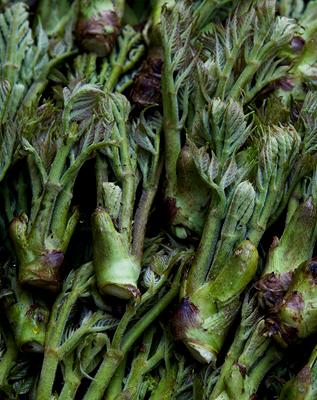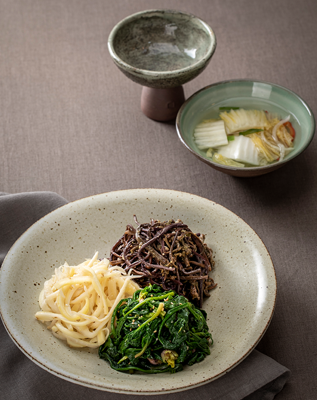Korean Temple Food
What is Korean temple food?

With Gratitude for Life and Prayers for Peace
Temple food refers to the food eaten daily at Buddhist temples.
At Buddhist temples, everything is considered a part of practice.
From growing vegetables to preparing the food,
monks and nuns are directly involved in the whole process.
Monastic practitioners make it a point to always be grateful for the efforts of all those
involved in the preparation of food.
They take only the amount need for their physical sustenance, leaving no leftover food
in their bowls. This distinctive approach to food preparation has been gradually shaped
over many centuries, based on a foundation of Buddhist philosophy and practice.
Temple food is natural, healthy and also a part of Buddhist life.
Even today the 1700 - year - old tradition is alive at Korean Buddhist temples.

Spirit and values contained in Temple Food
It trains human beings on how to live harmoniously with nature and take nature's offerings in the spirit of interbeing.
In temple food, there is a strong emphasis on the importance of not being attached to food itself.
Food is an agent to the goal of producing a pure and healthy vessel to hold and fulfill Buddha-dharma. It uses seasonal vegetables to satisfy both flavor and nutritional needs and as a result it comforts both mind and body.
It trains human beings on how to live harmoniously with nature and take nature's offerings in the spirit of interbeing.
Different ingredients are carefully combined to teach a lesson of peaceful coexistence and the truth of interconnectedness of all beings.
Temple Food reminds us of the circle of life by showing how all humans, like food, are born from nature and ultimately returns to it.
When your knees are frozen like ice, do not think about resting in warmth When your stomach is pierced by pain of hunger, do not think of eating
Balsim suhaeng jang (An Essay on Arising the Aspiration for Enlishtenment), by Wonhyo (617-686, Buddhist Master from the Silla period)
HEONSIKDAE
In the corner of the temple's yard few grains of rice are placed on top of a small stone altar.
During barugongyang, monks took small bites of their food to share with squirrels and birds. All sentient beings share together.





